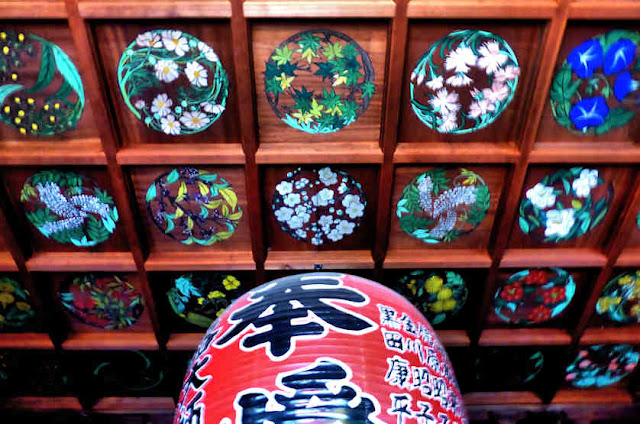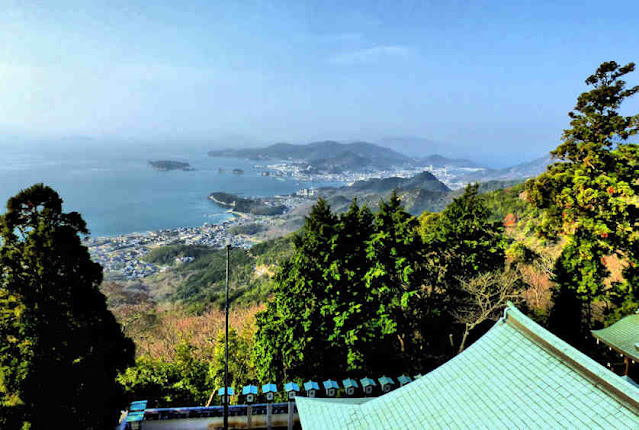Temples 43 and 45 on the Shodoshima Pilgrimage occupy the same site.
Jizoji, number 45, was a small temple not far away that because of a decreasing amount of parishioners decided to merge with Jodoji, and is now the Jizo Hall at that temple.
Jodoji has a delightful thatched Shoin that dates from the early Edo Period that was restored in the 1970's
Th3 main hall of Jodo-ji is made of concrete but is surprisingly elegant, with the concrete surfaces left untreated
The honzon of Jodoji is an Amida Buddha.
The honzon of Jizo-ji is, not surprisingly, a Jizo. It is noted for being a Jizo for protection against fire.
I was unable to find out the identity of the small shrine in the grounds.
As well as the thatched Shoin, the other interesting thing for me were the Onigawara ...
There were three distinct designs....
Theprevious post in this series on day 4 of my walk along the Shodoshima Pilgrimage was on
temple 42, Nishinotaki
If you would like to subscribe by email just leave your email address in the comments below. It will not be published and made public. I post new content almost everyday, and send out an email about twice a month with short descriptions and links to the last ten posts.






































































